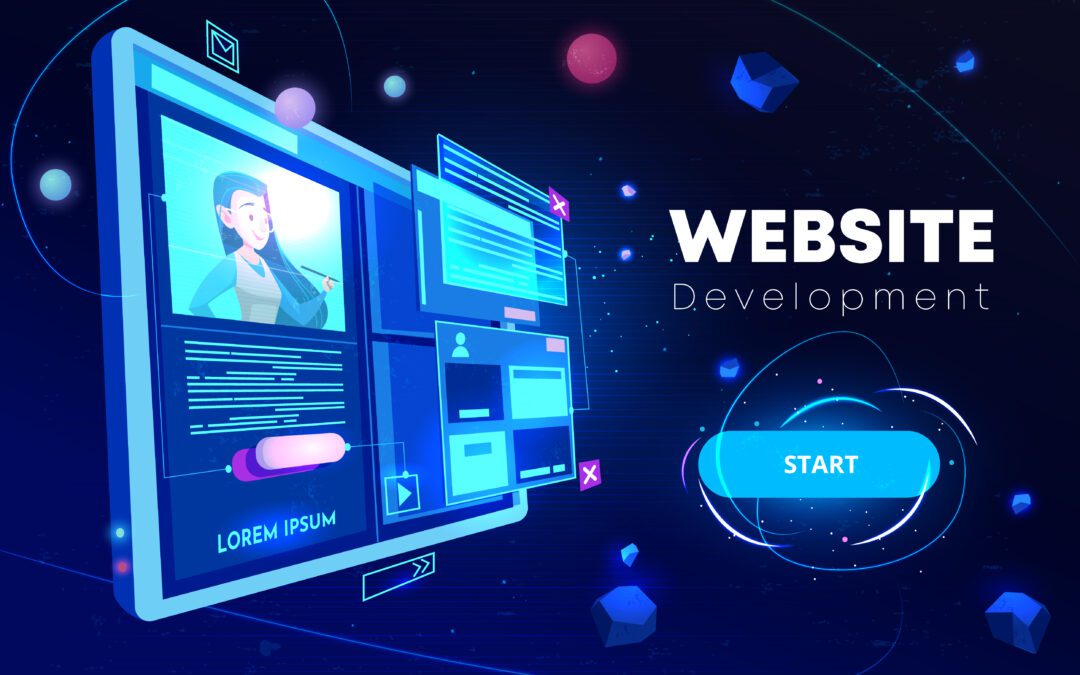Introduction:
In today’s digital landscape, the art of web design has evolved beyond mere functionality. It has become a captivating medium that can engage and inspire users, transforming their online experiences into something truly extraordinary. The ability to create stunning digital experiences lies at the heart of web design, blending aesthetics, usability, and storytelling. This article explores the essence of this art form, delving into the principles and techniques that can help designers craft websites that leave a lasting impression on their visitors.
1. Embracing Visual Harmony

At its core, web design is about visual communication. A harmonious interplay of color, typography, layout, and imagery can create an immersive experience that captivates users from the moment they land on a website. Designers must carefully select a color palette that resonates with the brand identity and evokes the desired emotional response. Thoughtful typography choices add personality and enhance readability. Attention to layout and spacing ensures a balanced composition that guides the user’s eye seamlessly through the content.
2. Storytelling Through Design

Every website has a story to tell, and skilled designers use their creative prowess to bring these narratives to life. By strategically employing visual elements, designers can guide users on a journey, evoking emotions and capturing their attention. Thoughtful placement of images, videos, and illustrations can create an immersive atmosphere, making the website a compelling storytelling platform.
3. Intuitive User Experience:

Creating stunning digital experiences requires more than visual aesthetics; it demands a deep understanding of user behavior. Web designers must focus on providing an intuitive and seamless user experience (UX). By employing user-centric design principles, such as clear navigation, intuitive interfaces, and easily accessible information, designers can ensure that users feel empowered and engaged while interacting with the website. Smooth transitions, micro-interactions, and responsive design elements further enhance the overall user experience.
4. Responsiveness and Accessibility

In an increasingly mobile-centric world, the art of web design extends to ensuring that digital experiences are accessible to users across different devices and platforms. Responsive web design, optimizing websites for various screen sizes, is crucial to maintain the integrity of the design and provide a consistent experience. Moreover, web designers should adhere to accessibility guidelines, making their creations inclusive and usable for all individuals, regardless of disabilities.
5. Evolutionary Design:

The art of web design is a dynamic field that constantly evolves to adapt to new technologies, design trends, and user expectations. Designers must stay abreast of emerging tools, techniques, and frameworks while balancing the need for innovation and creativity. Regular updates and iterative improvements ensure that websites continue to provide stunning digital experiences that remain relevant and engaging.
Conclusion
Web design has transcended its functional roots and transformed into an art form that creates stunning digital experiences. The fusion of visual aesthetics, storytelling, intuitive user experience, responsiveness, and accessibility lies at the heart of this art. By embracing these principles and techniques, web designers have the power to captivate users, leaving a lasting impression and shaping the way people interact with the digital realm. The art of web design is an ongoing journey of creativity and innovation, with the potential to redefine the boundaries of digital experiences.
For more information contact us.
